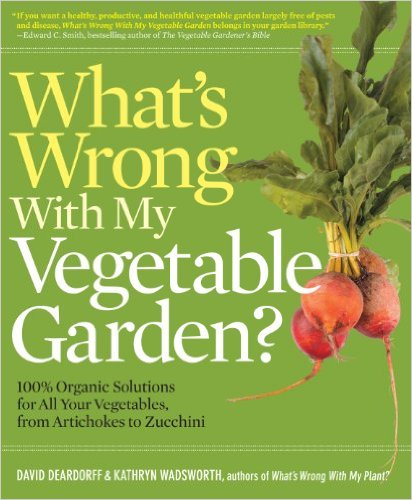 There is great satisfaction in harvesting and eating fresh vegetable from your own garden but anyone who has had a vegetable garden knows about the obstacles that must be overcome. Disease, pests, and weeds as well as light, nutrients, and water play an important role in producing an abundance of good quality produce. u by David Deardorff and Kathryn Wadsworth provides a guide for growing vegetables organically by providing good growing conditions, recognizing problems, and eliminating the problems with organic solutions.
There is great satisfaction in harvesting and eating fresh vegetable from your own garden but anyone who has had a vegetable garden knows about the obstacles that must be overcome. Disease, pests, and weeds as well as light, nutrients, and water play an important role in producing an abundance of good quality produce. u by David Deardorff and Kathryn Wadsworth provides a guide for growing vegetables organically by providing good growing conditions, recognizing problems, and eliminating the problems with organic solutions.
The first section deals with the basics of temperature, soil, light, and water requirements of vegetables in general. The problems associated with each of these factors are presented in chart form with a picture, diagnosis, description of symptoms, and list of solutions. The pictures are especially valuable in identifying problems.
The second section gives detailed information on growing forty five different vegetables from artichokes to zucchini. Each entry includes a description of the vegetable, optimum temperature, soil, light, and water conditions, garden uses and planting techniques, and problem solving. Here is where readers learn about cool and warm weather crops, when to plant seeds, which vegetable transplant easily and what supporting structures may be needed.
The most valuable part of the book to me was the third which was devoted to identifying problems caused by pests and diseases. The material is organized by plant family since members of the same family tend to share the same disease problems. For each disease there is a picture, diagnosis, description of the symptoms and a list solutions. The solutions are listed in order of their toxicity with the most toxic last.
The last section of the book provides a discussion of the various solutions listed in the first and third parts of the book. Readers can learn about organic fertilizers, polyculture, encouraging beneficial fauna, neem, the use of baking soda as a fungicide and many other organic solutions to plant problems. All of the solutions recommended in the book are approved for organic gardens, some are toxic and non-targeted so must be used with care.
To buy What’s Wrong with My Vegetable Garden? from Amazon.com click here.